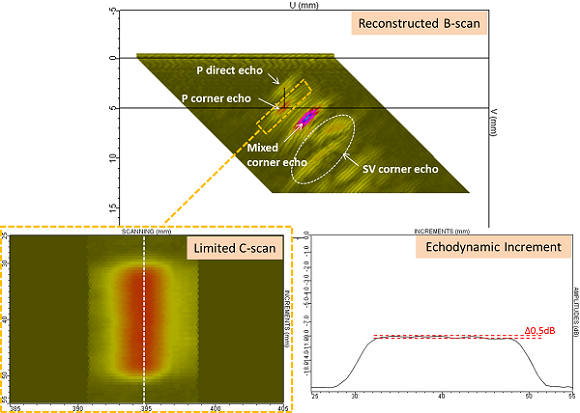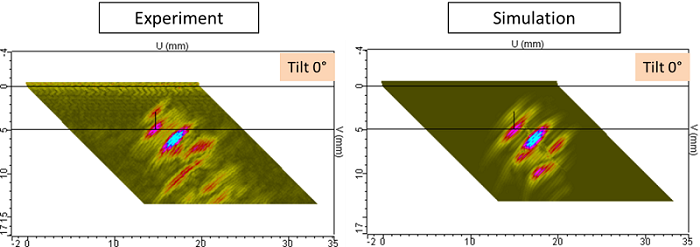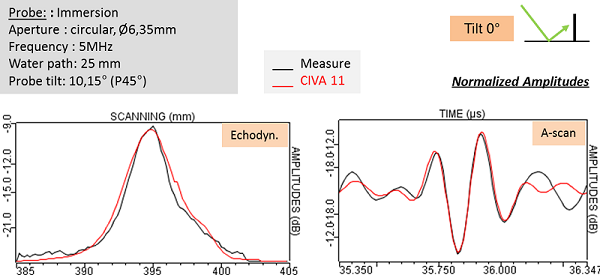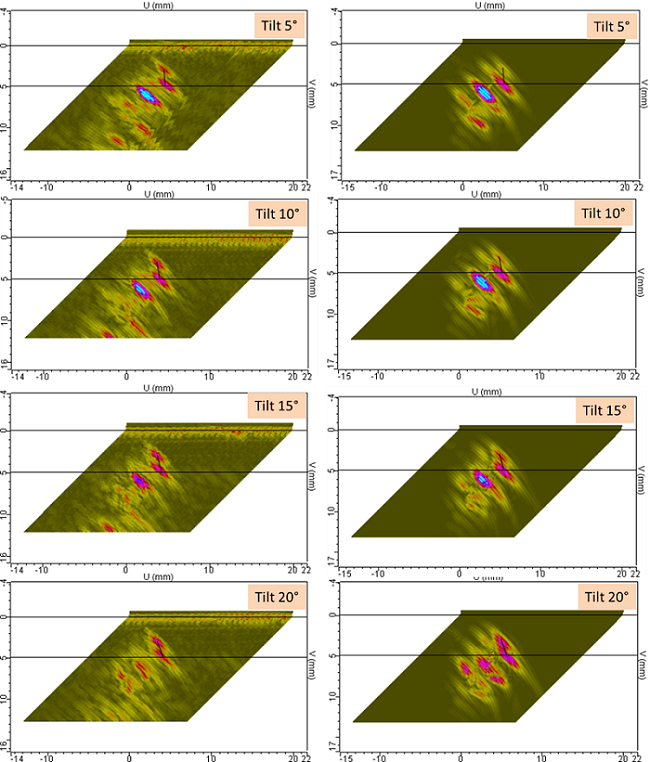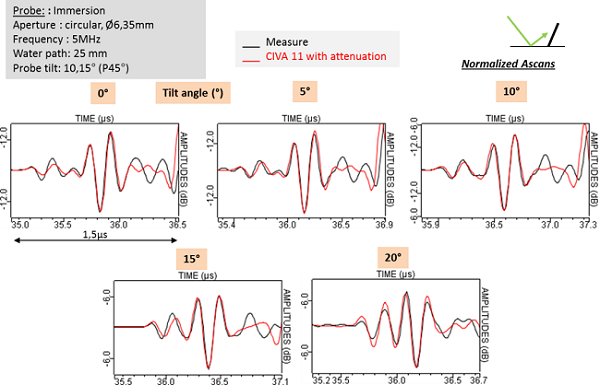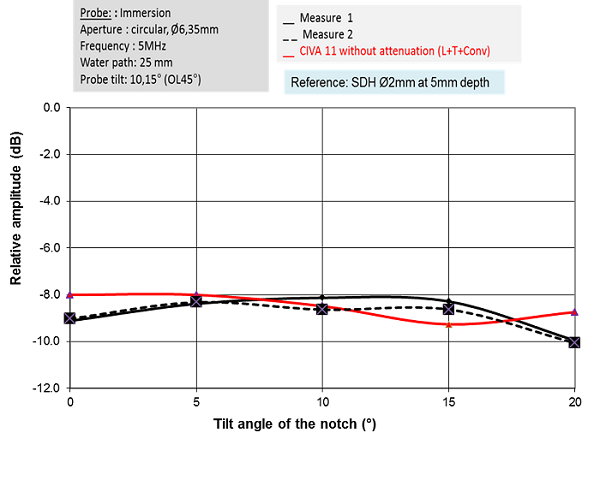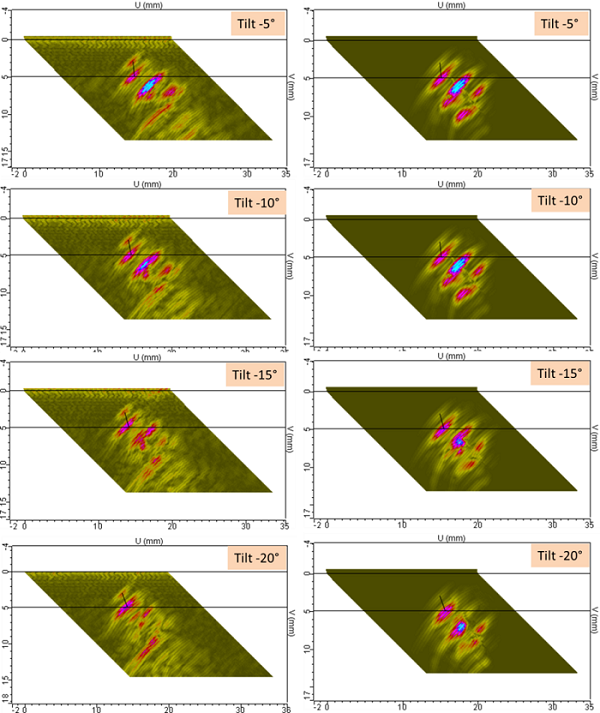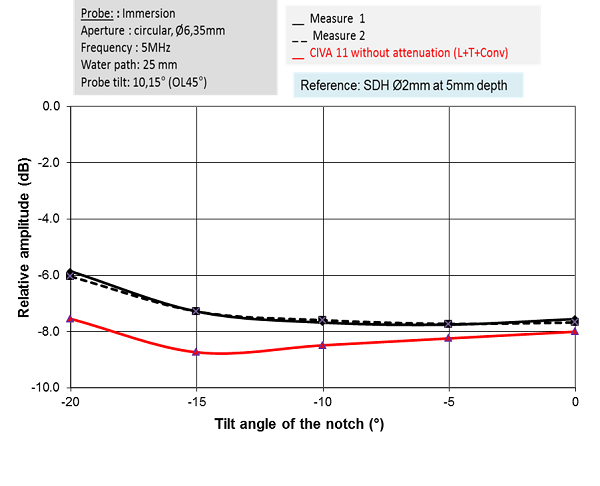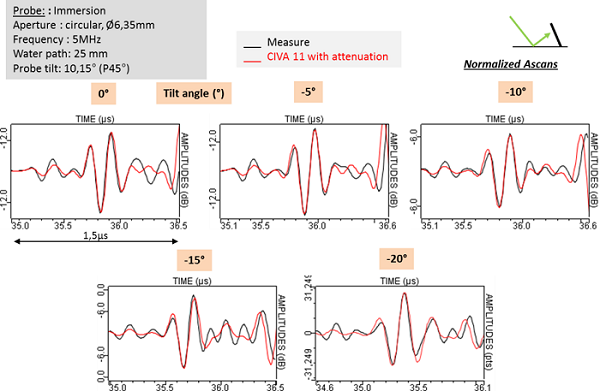In order to generate P45° waves in the multi-skip specimen, the incidence angle of the probe is 10.15°. Above the SDH mock-up, the incidence angle is 10.38°. The reference amplitude corresponds to the P45° response of the Ø2 mm SDH located at 5 mm depth.
Results with a vertical notch
The figure below shows the comparison of experimental and simulated Bscans when the notch tilt is 0°.
CIVA diffraction echo is weaker than the corner echo. However, experimental results show that both echoes have quite similar amplitude. This difference is probably due to the notch aperture which is not taken into account in CIVA. This study focuses on corner echoes and it is not necessary to account for notch aperture to simulate them.
There is a good agreement between experimental and simulated Ascan and echodynamic curves.
Results with opened tilt angle notch
Simulated echoes look like real ones. The amplitude of the P corner echo does not change with the tilt angle. This behavior is well predicted by CIVA 11.
Experimental and simulated Ascan shape and amplitude of the P corner echo for all tilt angles are in good agreement.
The figure below show variation of experimental and simulated P corner echoes amplitude with the tilt angle. Whatever the tilt angle, simulation results and experiment are in good agreement (less than 2 dB difference). A measure of reproducibility is presented in black dots. The experimental error is less than 1 dB.
Results with a clsed tilt angle notch
Simulated and experimental echoes are in good agreement. The P corner echo amplitude almost does not change with the tilt angle. This behavior is well predicted by CIVA.
Furthermore, the shape of P experimental and simulated corner echoes are in good agreement.
CONCLUSION
P45° inspections show that experimental corner echoes amplitude are in good agreement with CIVA 11 predictions. There are differences on the diffraction echo because the notch aperture was not taken into account. This validation study does not focus on this echo, so these differences are not studied here.
Continue to Results for the 5 MHz phased array probe generating T45 waves with different focusng sound path

